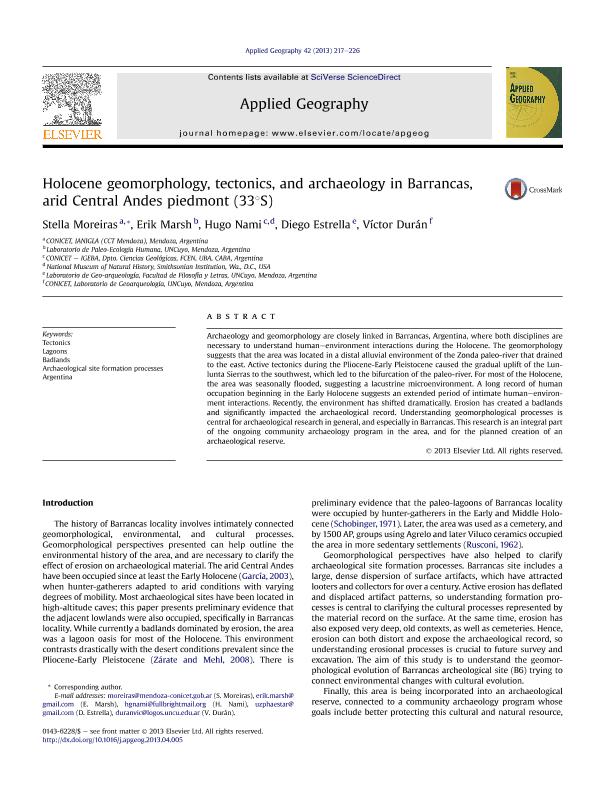Artículo
Holocene geomorphology, tectonics, and archaeology in Barrancas, arid Central Andes piedmont (33°S)
Fecha de publicación:
10/2013
Editorial:
Elsevier
Revista:
Applied Geography
ISSN:
0143-6228
Idioma:
Inglés
Tipo de recurso:
Artículo publicado
Clasificación temática:
Resumen
Archaeology and geomorphology are closely linked in Barrancas, Argentina, where both disciplines are necessary to understand human-environment interactions during the Holocene. The geomorphology suggests that the area was located in a distal alluvial environment of the Zonda paleo-river that drained to the east. Active tectonics during the Pliocene-Early Pleistocene caused the gradual uplift of the Lunlunta Sierras to the southwest, which led to the bifurcation of the paleo-river. For most of the Holocene, the area was seasonally flooded, suggesting a lacustrine microenvironment. A long record of human occupation beginning in the Early Holocene suggests an extended period of intimate human-environment interactions. Recently, the environment has shifted dramatically. Erosion has created a badlands and significantly impacted the archaeological record. Understanding geomorphological processes is central for archaeological research in general, and especially in Barrancas. This research is an integral part of the ongoing community archaeology program in the area, and for the planned creation of an archaeological reserve.
Palabras clave:
Tectonics
,
Lagoons
,
Badlands
,
Archaeological Site Dormation Processes
,
Argentina
Archivos asociados
Licencia
Identificadores
Colecciones
Articulos(CCT - MENDOZA)
Articulos de CTRO.CIENTIFICO TECNOL.CONICET - MENDOZA
Articulos de CTRO.CIENTIFICO TECNOL.CONICET - MENDOZA
Citación
Moreiras, Stella Maris; Marsh, Erik Johnson; Nami, Hugo Gabriel; Estrella, Diego; Durán, Víctor; Holocene geomorphology, tectonics, and archaeology in Barrancas, arid Central Andes piedmont (33°S); Elsevier; Applied Geography; 42; 10-2013; 217-226
Compartir
Altmétricas




